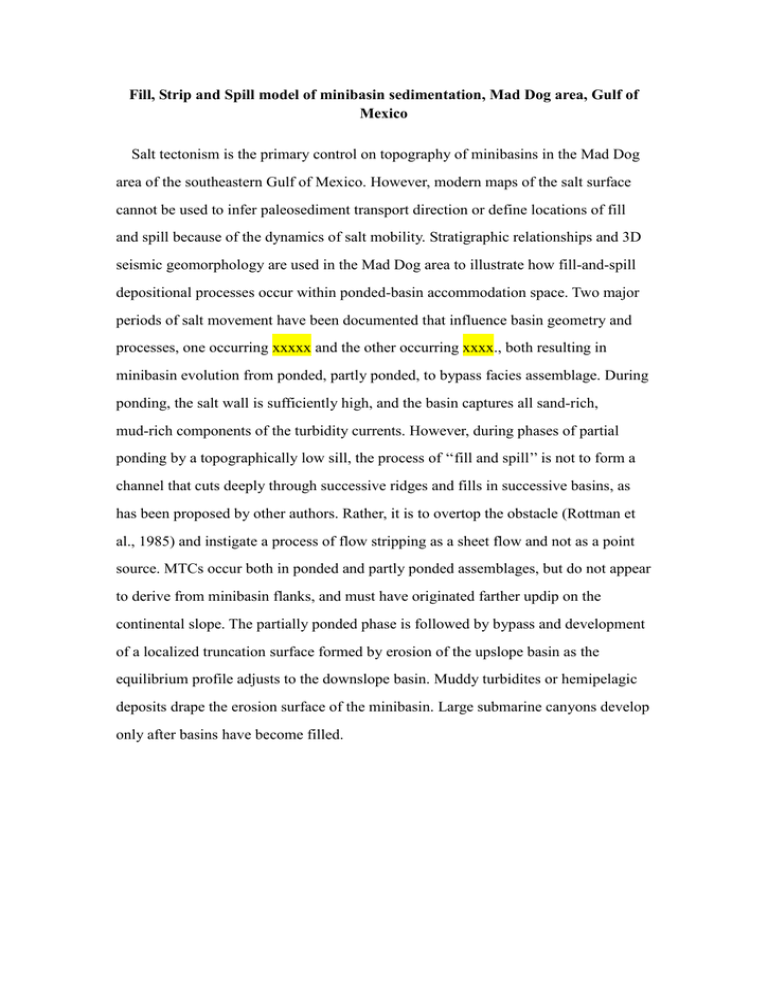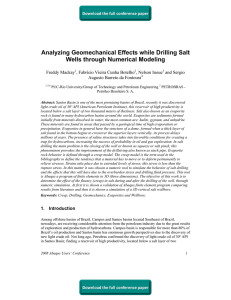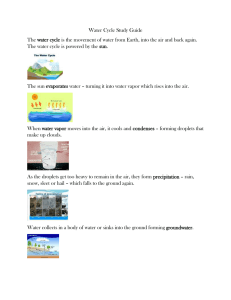Fill, Strip and Spill model of minibasin sedimentation, Mad Dog... Mexico Salt tectonism is the primary control on topography of minibasins...
advertisement

Fill, Strip and Spill model of minibasin sedimentation, Mad Dog area, Gulf of Mexico Salt tectonism is the primary control on topography of minibasins in the Mad Dog area of the southeastern Gulf of Mexico. However, modern maps of the salt surface cannot be used to infer paleosediment transport direction or define locations of fill and spill because of the dynamics of salt mobility. Stratigraphic relationships and 3D seismic geomorphology are used in the Mad Dog area to illustrate how fill-and-spill depositional processes occur within ponded-basin accommodation space. Two major periods of salt movement have been documented that influence basin geometry and processes, one occurring xxxxx and the other occurring xxxx., both resulting in minibasin evolution from ponded, partly ponded, to bypass facies assemblage. During ponding, the salt wall is sufficiently high, and the basin captures all sand-rich, mud-rich components of the turbidity currents. However, during phases of partial ponding by a topographically low sill, the process of ‘‘fill and spill’’ is not to form a channel that cuts deeply through successive ridges and fills in successive basins, as has been proposed by other authors. Rather, it is to overtop the obstacle (Rottman et al., 1985) and instigate a process of flow stripping as a sheet flow and not as a point source. MTCs occur both in ponded and partly ponded assemblages, but do not appear to derive from minibasin flanks, and must have originated farther updip on the continental slope. The partially ponded phase is followed by bypass and development of a localized truncation surface formed by erosion of the upslope basin as the equilibrium profile adjusts to the downslope basin. Muddy turbidites or hemipelagic deposits drape the erosion surface of the minibasin. Large submarine canyons develop only after basins have become filled.




